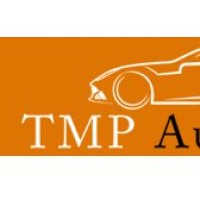Top Full Stack Development Frameworks in 2025: A Comprehensive Guide
The world of web development is dynamic, with constant advancements shaping the way developers build, test, and deploy applications. As we step into 2025, full stack development frameworks continue to be vital in enabling developers to manage both the front-end and back-end aspects of web development seamlessly. This guide explores the most popular full stack development frameworks of 2025 and highlights their features, benefits, and best use cases, helping developers make informed choices.
What Are Full Stack Development Frameworks?
Full stack development frameworks are tools or platforms that provide a structured environment for building both client-side (front-end) and server-side (back-end) components of web applications. They often include libraries, APIs, and tools to accelerate development while ensuring scalability, security, and performance.
Some frameworks are all-inclusive, offering everything needed for full stack development, while others are specialized for particular tasks or industries. Choosing the right framework can make or break a project, especially when it comes to meeting deadlines, ensuring user satisfaction, and supporting future growth.
Top Full Stack Development Frameworks in 2025
1. React + Node.js (MERN Stack)
The MERN stack, comprising MongoDB, Express.js, React, and Node.js, remains a favorite among developers for its flexibility and JavaScript-based ecosystem.
Key Features:
React for building dynamic, responsive user interfaces.
Node.js for handling server-side operations with high performance.
MongoDB for scalable, NoSQL databases.
Seamless integration among components.
Advantages:
End-to-end JavaScript.
Large community support and extensive libraries.
Ideal for real-time applications like chat apps and e-commerce platforms.
Best Use Cases: Single-page applications (SPAs), social media platforms, and interactive dashboards.
2. Django + React
Django, a Python-based back-end framework, combined with React, provides a powerful full stack solution for developers prioritizing speed and security.
Key Features:
Django’s "batteries-included" approach.
React’s component-based architecture.
Built-in security features like CSRF protection in Django.
Advantages:
Python’s simplicity and versatility.
Optimized for high-level performance.
Built-in ORM for database management.
Best Use Cases: Fintech applications, healthcare platforms, and content management systems (CMS).
3. Ruby on Rails (Rails)
Ruby on Rails, a classic yet evolving framework, continues to be a top choice for rapid development.
Key Features:
Convention over configuration.
Built-in testing environment.
Active Record for database queries.
Advantages:
Fast development with minimal boilerplate code.
Extensive plugin ecosystem (gems).
Excellent for startups and MVPs.
Best Use Cases: E-commerce sites, SaaS platforms, and custom web applications.
4. ASP.NET Core + Blazor
Microsoft’s ASP.NET Core paired with Blazor has gained traction for building modern, high-performance web apps.
Key Features:
ASP.NET Core’s cross-platform capabilities.
Blazor’s ability to run C# in the browser.
Strong security and scalability.
Advantages:
Unified programming language (C#).
Excellent tooling in Visual Studio.
High compatibility with enterprise systems.
Best Use Cases: Enterprise-grade applications, cloud-based solutions, and real-time apps.
5. Next.js
Next.js, built on top of React, has become the go-to framework for server-side rendering (SSR) and static site generation (SSG).
Key Features:
Automatic routing.
Built-in support for SSR and SSG.
API routes for server-side logic.
Advantages:
Improved SEO and performance.
Robust developer experience.
Strong community and ecosystem.
Best Use Cases: SEO-friendly websites, content-heavy applications, and e-commerce stores.
6. Spring Boot + Angular
Spring Boot, a Java-based back-end framework, combined with Angular, delivers a robust environment for building scalable applications.
Key Features:
Microservices-friendly architecture in Spring Boot.
Angular’s two-way data binding.
Comprehensive testing tools.
Advantages:
Enterprise-level security and reliability.
Easy integration with legacy systems.
Strong support for REST APIs.
Best Use Cases: Banking systems, insurance platforms, and large-scale enterprise applications.
7. Laravel + Vue.js
Laravel, a PHP-based back-end framework, combined with Vue.js, offers a seamless solution for building interactive and efficient web applications.
Key Features:
Laravel’s elegant syntax and robust ORM (Eloquent).
Vue.js’s reactive and component-based structure.
Built-in support for authentication and routing in Laravel.
Advantages:
Simple learning curve.
Excellent for small to medium-sized projects.
Active community and extensive documentation.
Best Use Cases: Blogging platforms, CRM systems, and small e-commerce websites.
8. SvelteKit
SvelteKit, a relatively newer player, is rapidly gaining popularity for its simplicity and high performance.
Key Features:
No virtual DOM for faster rendering.
Built-in support for SSR.
Minimal boilerplate.
Advantages:
Highly optimized applications.
Developer-friendly syntax.
Lightweight and fast.
Best Use Cases: Progressive web apps (PWAs), dashboards, and lightweight apps.
Factors to Consider When Choosing a Full Stack Framework
Selecting the right framework depends on several factors, including:
Project Requirements: Understand the scope and features needed.
Team Expertise: Consider the skills and experience of your development team.
Scalability: Ensure the framework can handle future growth.
Community Support: A strong community ensures easier troubleshooting and access to resources.
Performance Needs: Evaluate the performance benchmarks of the framework.
Conclusion
The landscape of full stack development frameworks in 2025 is diverse, catering to a wide range of applications and industries. Whether you’re a startup looking to build an MVP quickly or an enterprise aiming for robust and scalable solutions, there’s a framework tailored to your needs.
Choosing the right framework is a crucial decision that can impact your project’s success. By considering the frameworks discussed in this guide, you can make an informed choice that aligns with your technical requirements and business goals.
Ready to build your next web application? Explore these frameworks and start creating cutting-edge solutions today!
Post Your Ad Here
